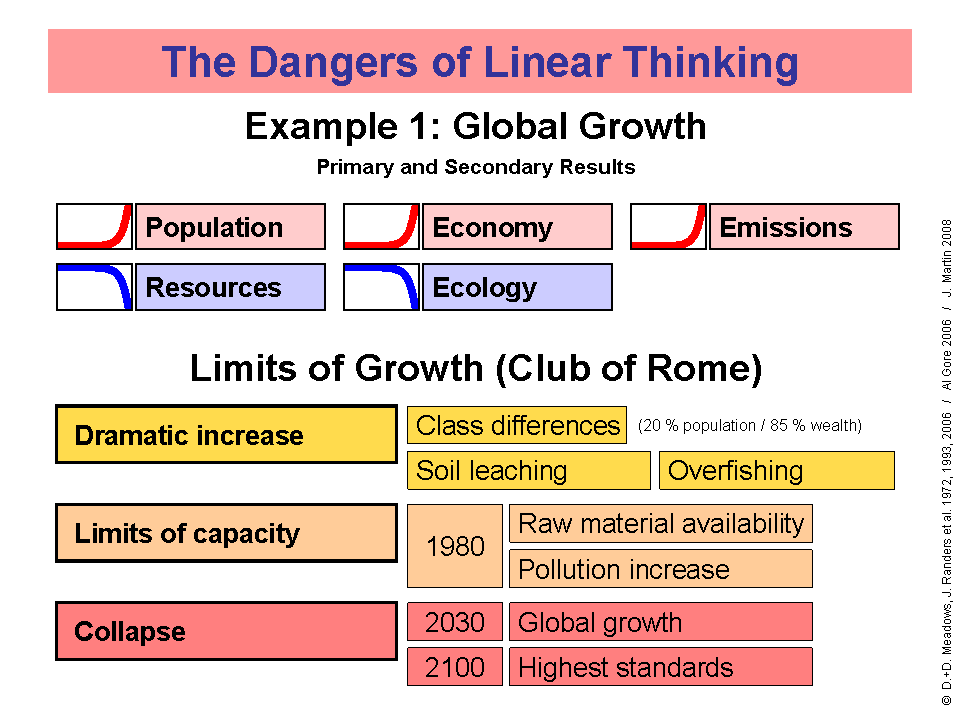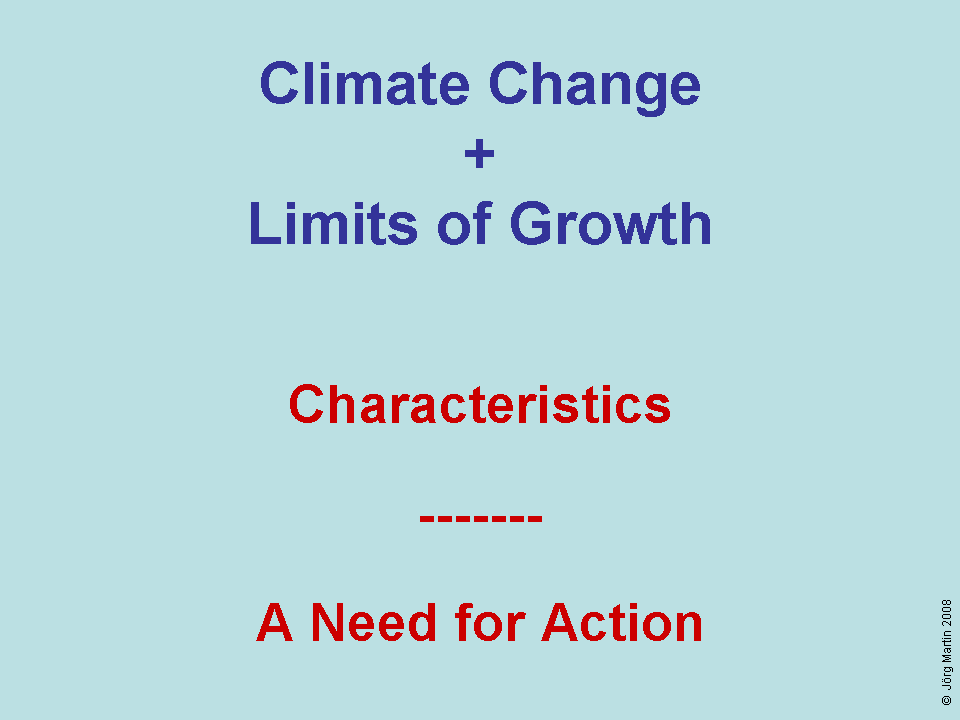
| Growth Curves | |
| • | Water Lily Pond |
| • | Pond Curves |
| • | Expection Curve |
| • | Tough Luck! |
| Limits of Growth | |
| • | Positive Feedback |
| • | Club of Rome |
| • | Amazon Region |
| Methane | |
| • | Resources |
| • | Chain Reaction |
Example 1: Global Growth - Primary and Secondary Results
Population
The amount of the world's population increases with nonlinear speed and thereby primarily determines the remaining global growth processes.
Economy
Constant growth rates in the economy are publicized worldwide as the most important need for political action. A nonlinear global economy growth is connected with this implementation.
Emissions
Emissions such as waste, sewage, air pollution, and heat put pressure on the environment with a nonlinear escalation. The addition of greenhouse gases relevant to global warming also increases in a nonlinear manner.
Resources
Population and economy growth lead to a nonlinear decrease in available resources.
Ecosystem
The resilience of the ecosystem decreases in a nonlinear manner due to the factors previously explained.
Limits of Growth (Club of Rome)
The last report from the Club of Rome was published in the year 2006[40] with these results:
Class differences are increasing globally. Around 20 % of the world's population owns around 85 % of the wealth. Soil leaching and overfishing endanger the most important nutritional fundamentals.
In the year 1980, the capacity of raw materials available for global growth was exceeded. From this point in time, the relationship between capacity and raw material reduction increased with a nonlinear tendency. The ecological capacity to accommodate the pollution produced by humans was also exceeded at this point in time.
The continuation of global growth on the basis of the previously stated ways of life and technology will lead to a worldwide collapse in the year 2030 at the latest (the limit values of the nonlinear processes involved will then be reached).
The introduction of the highest ecological standards delays this collapse to the year 2100; radical sustainability (such as consumer restrictions, pollution reductions, population controls) will probably prevent it.
| Associated Slide |
 |
| Illustrating Slides |
 |
| Slide 1 |